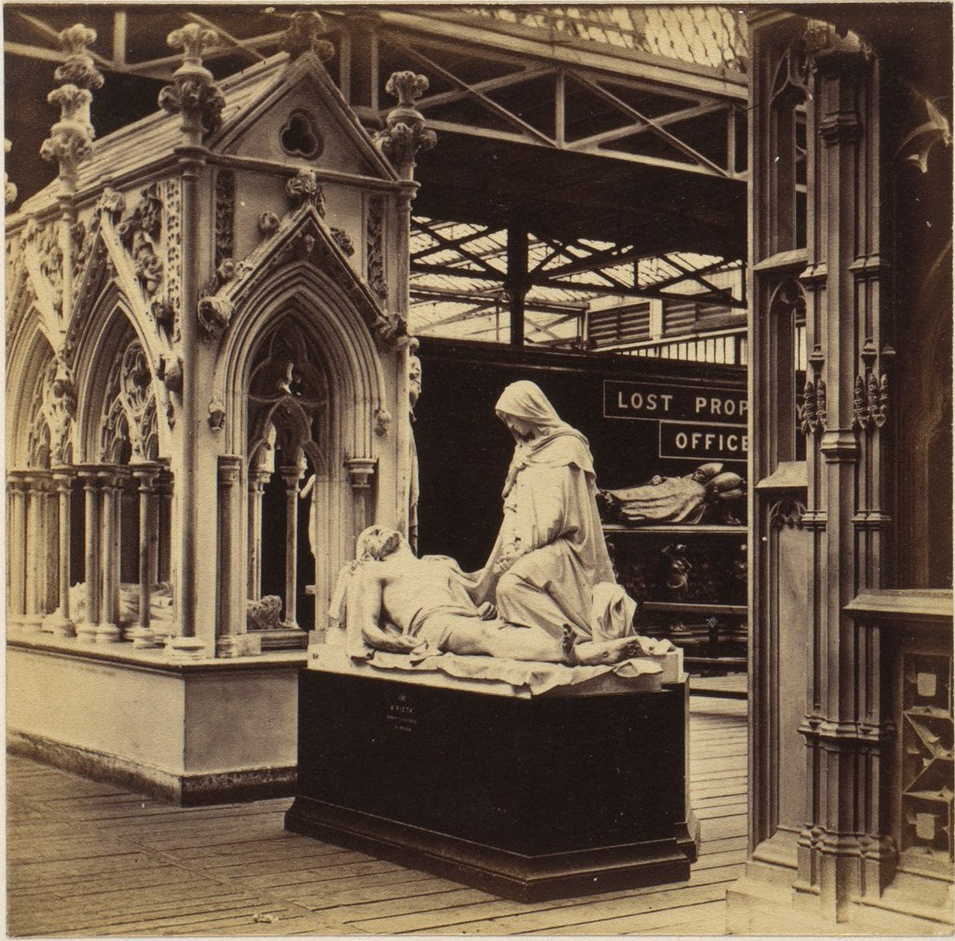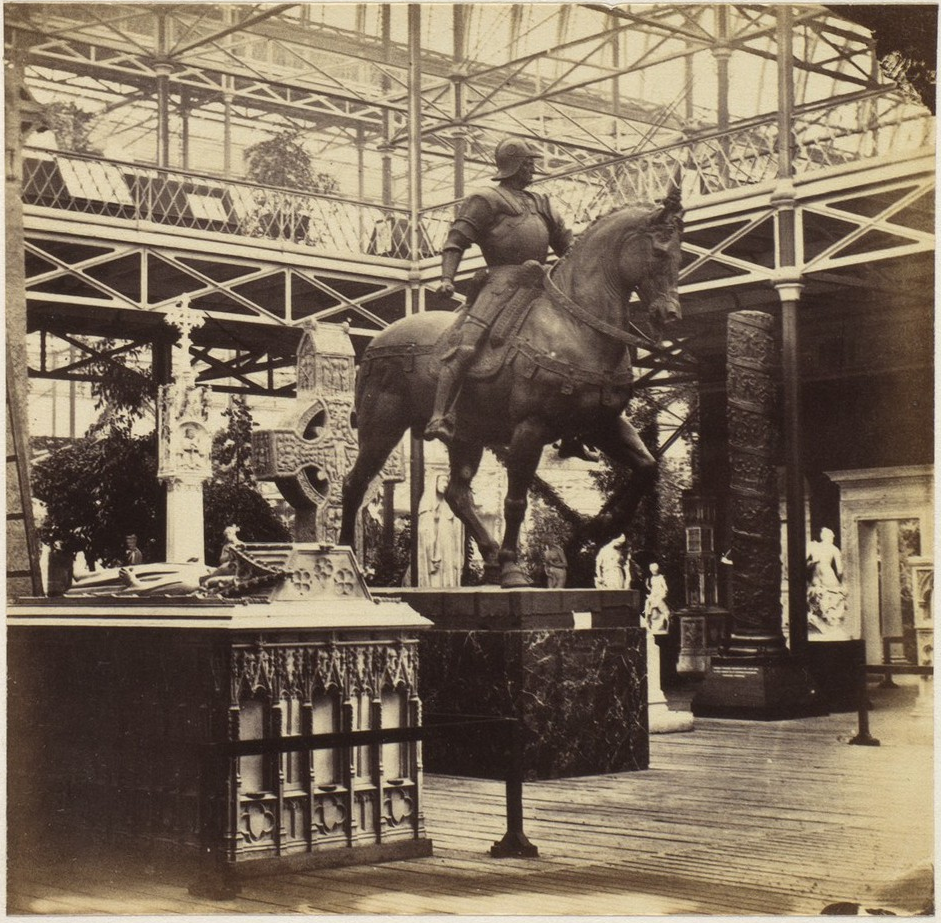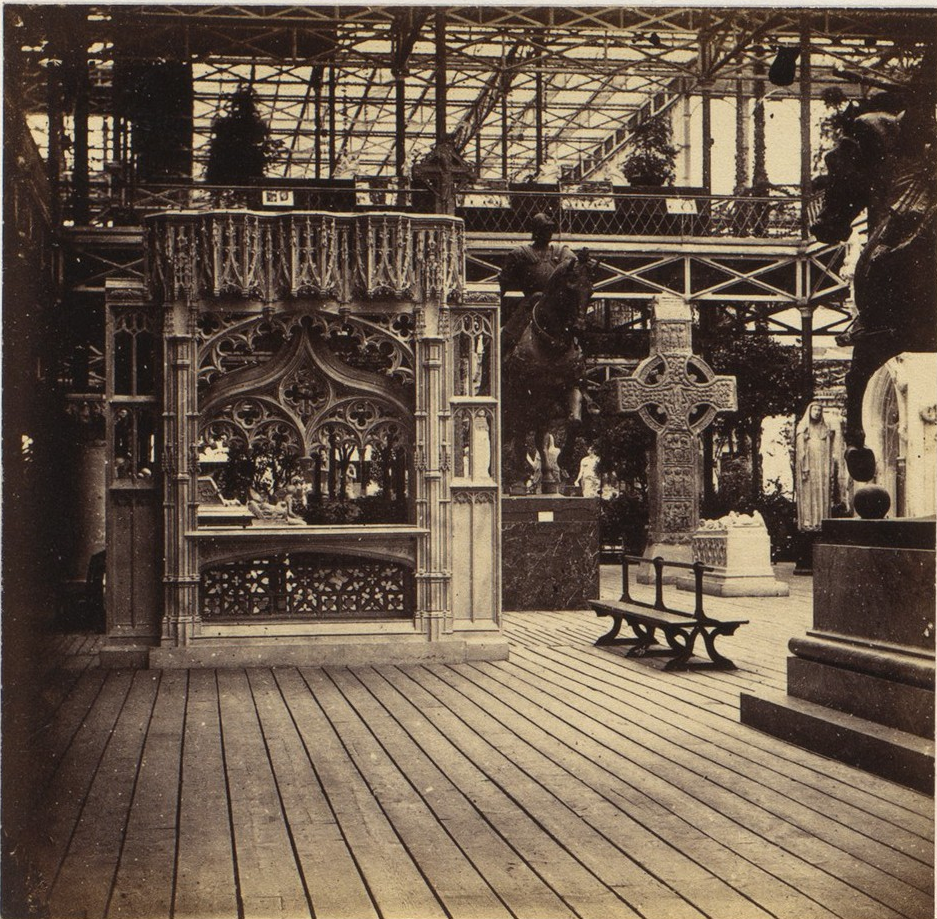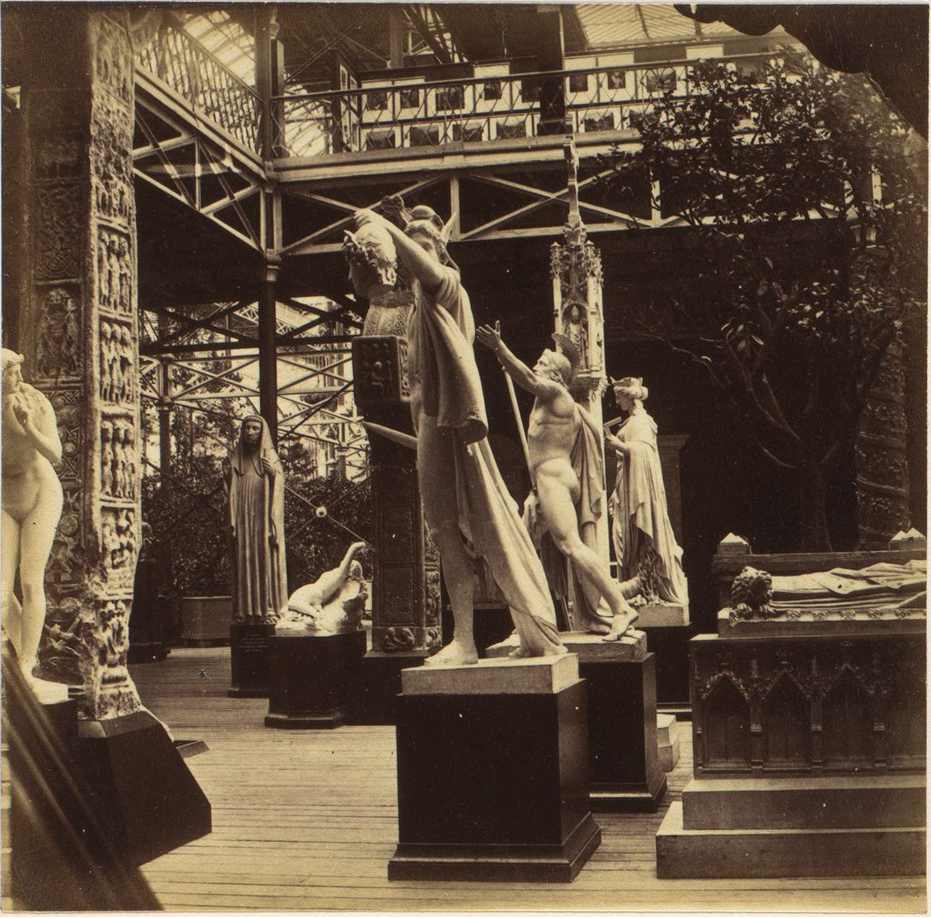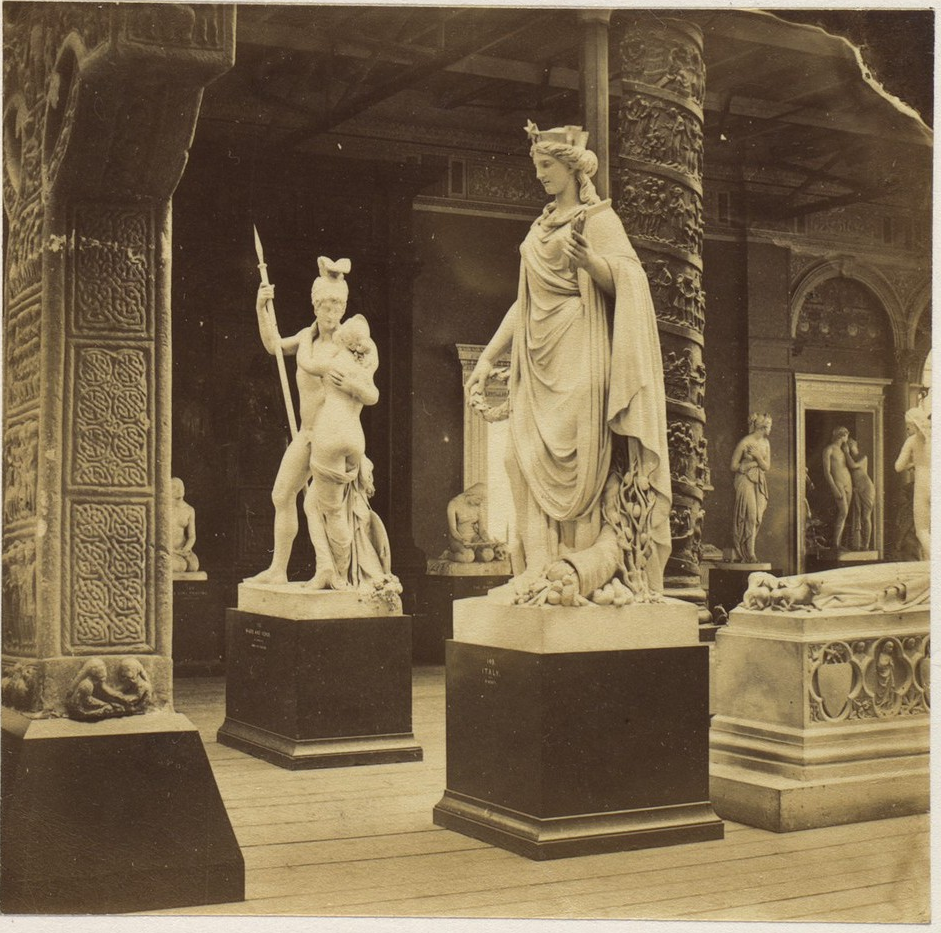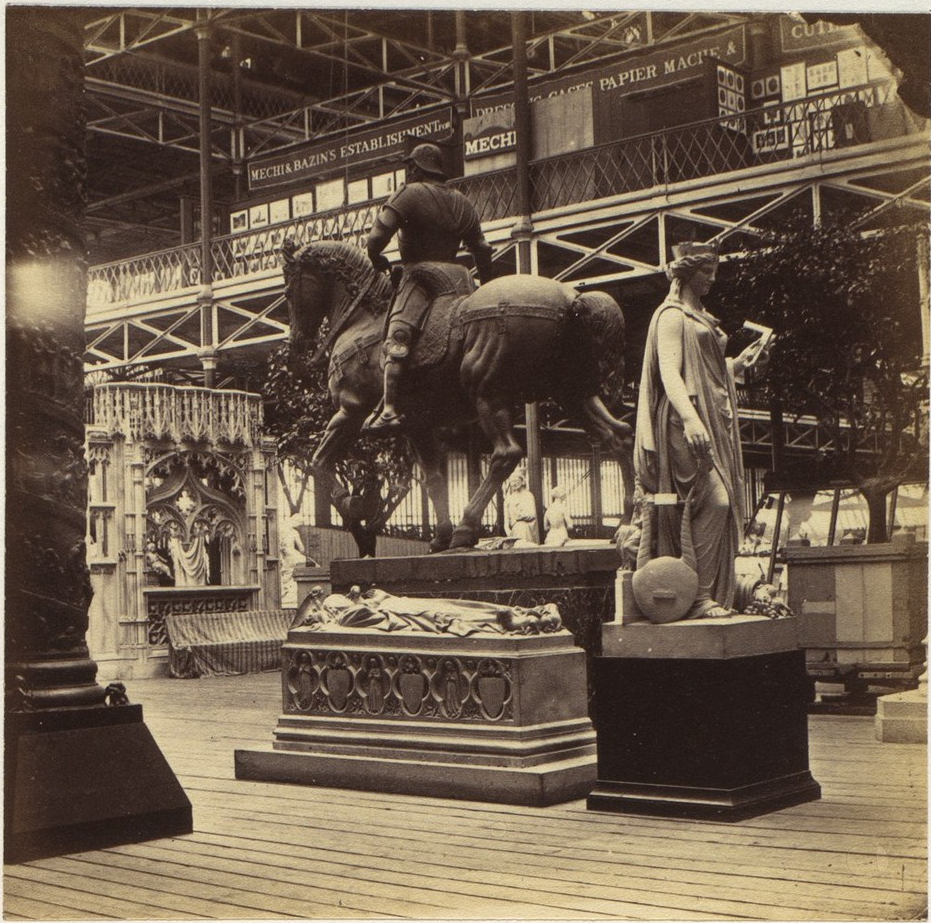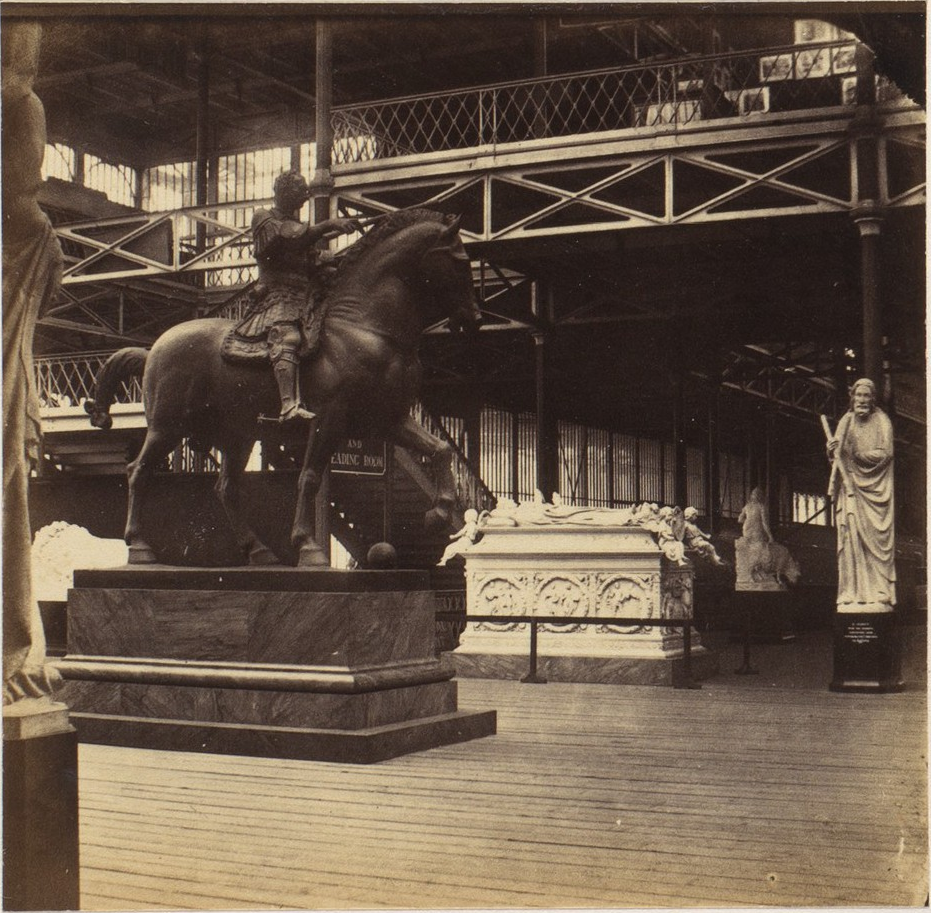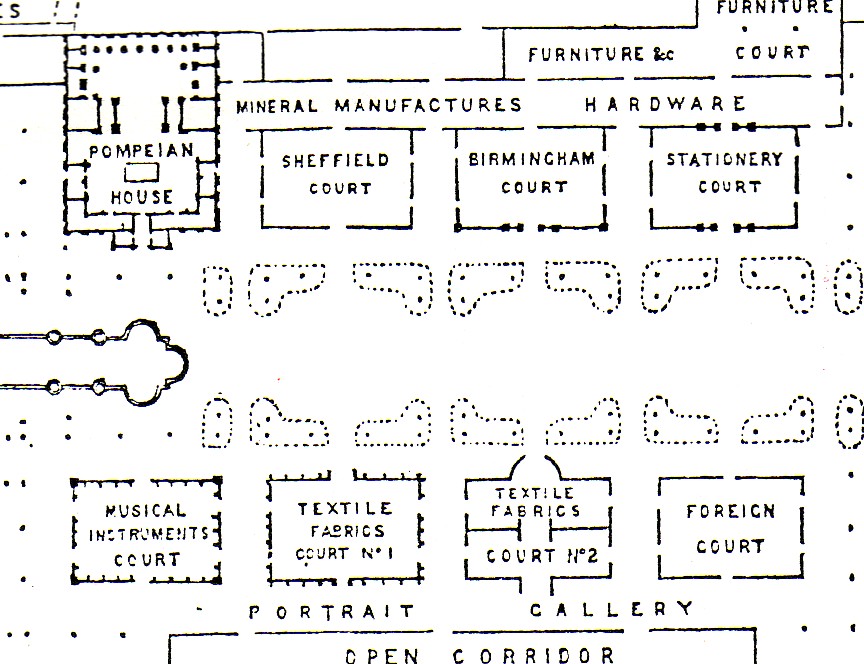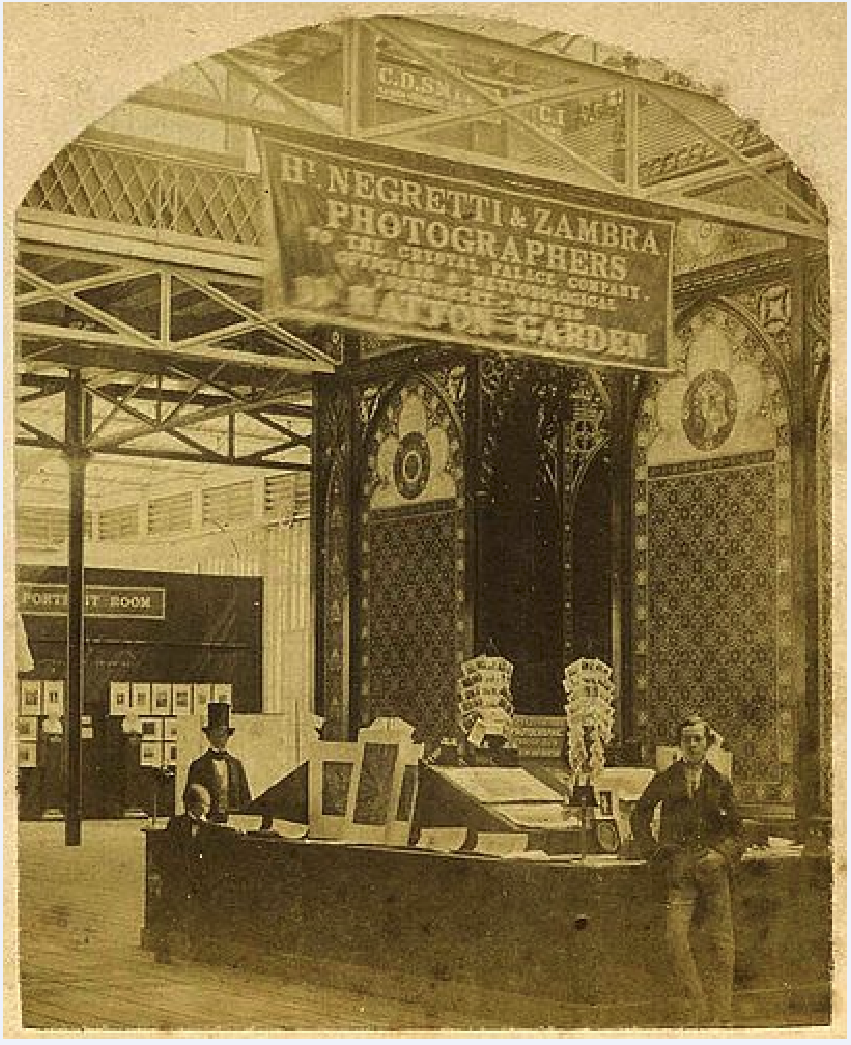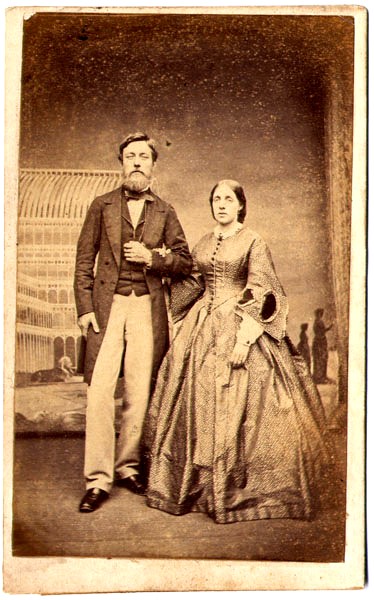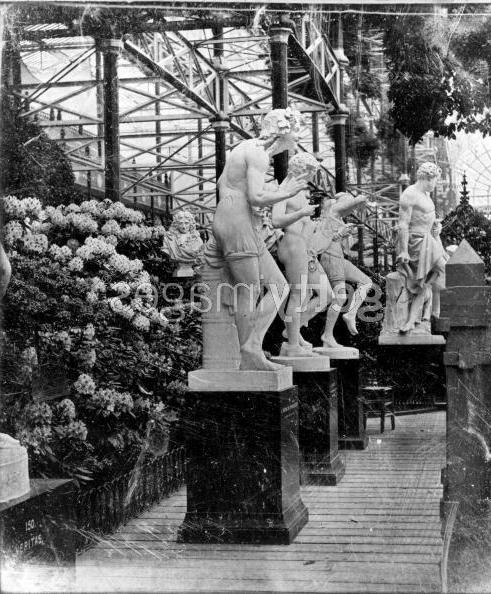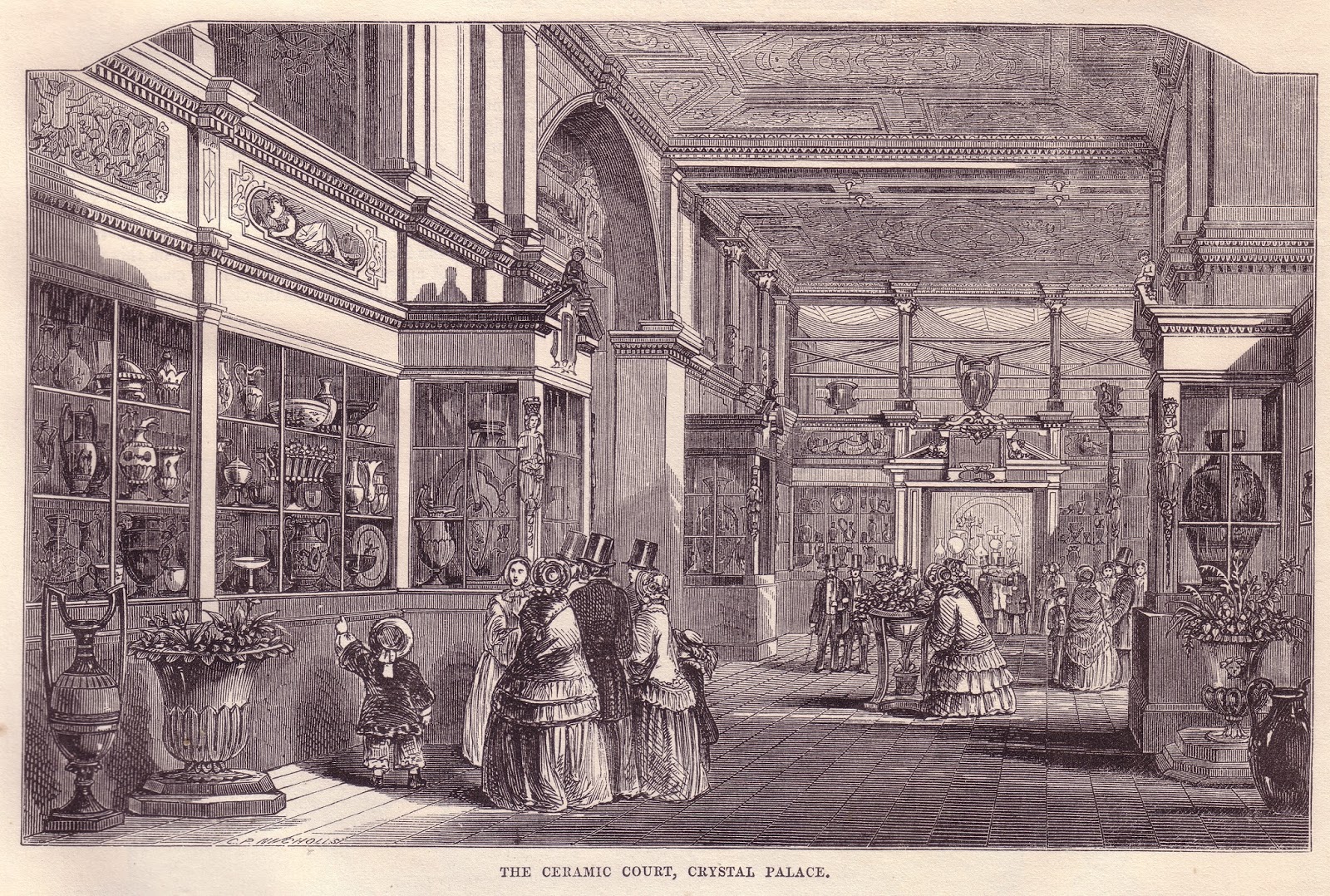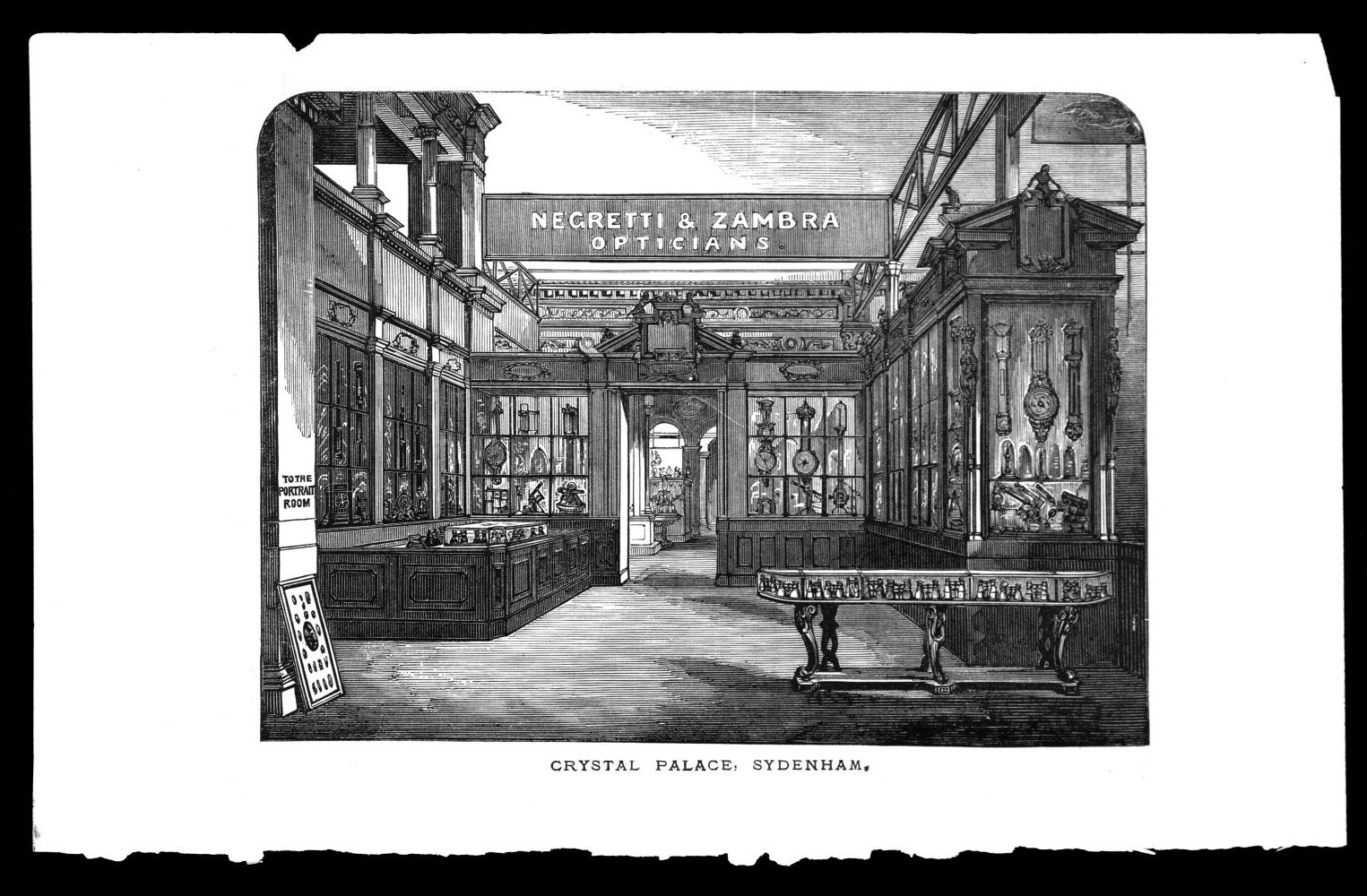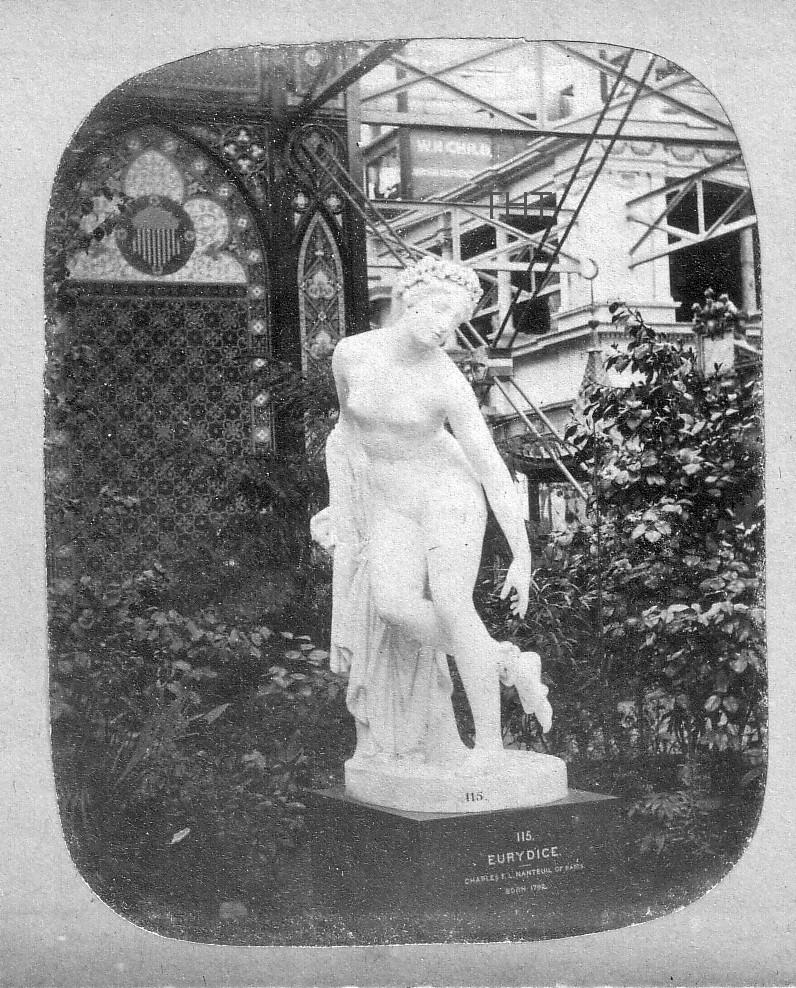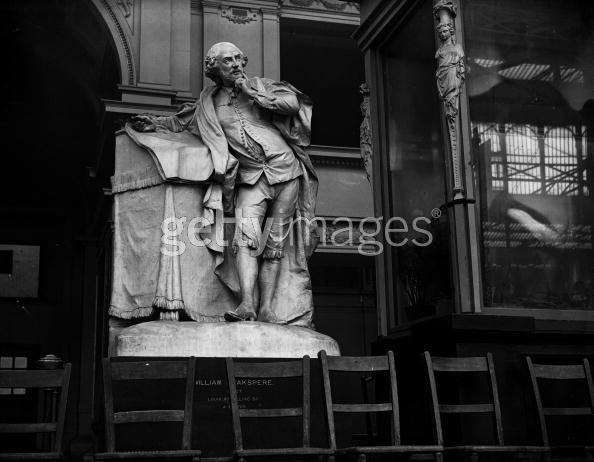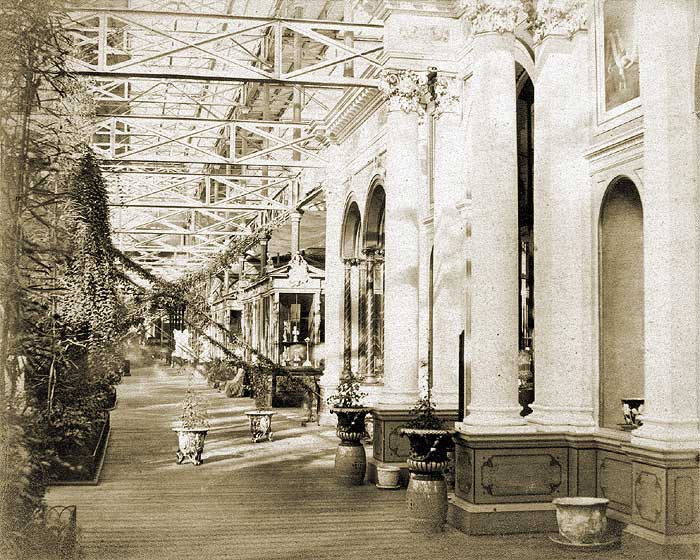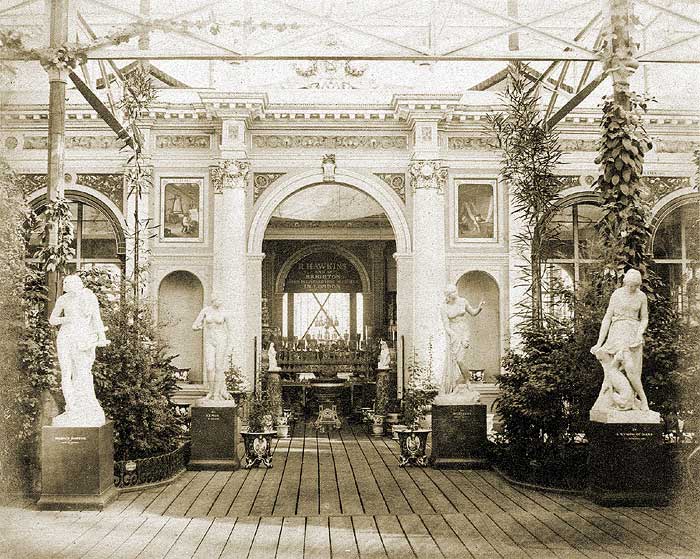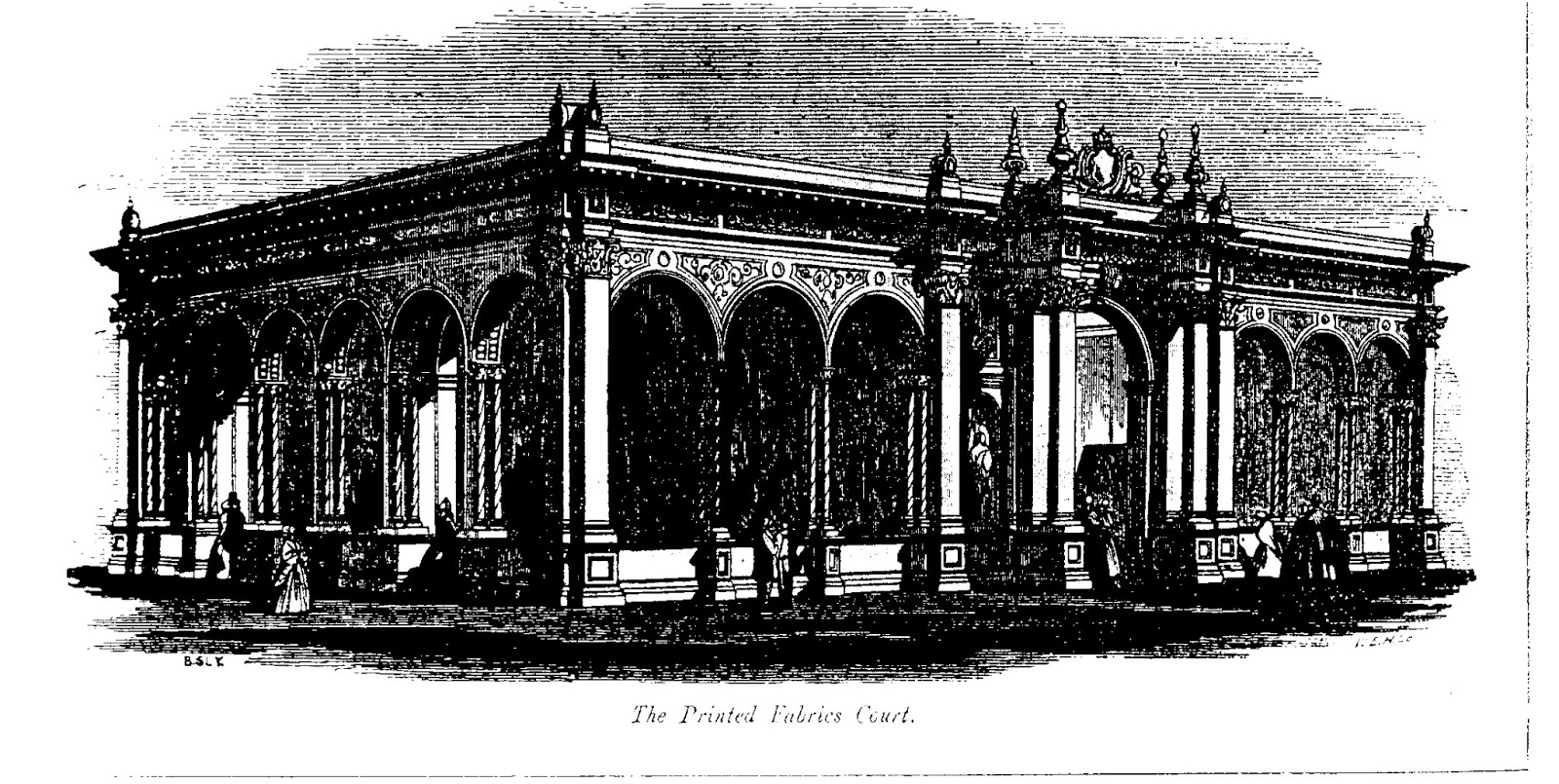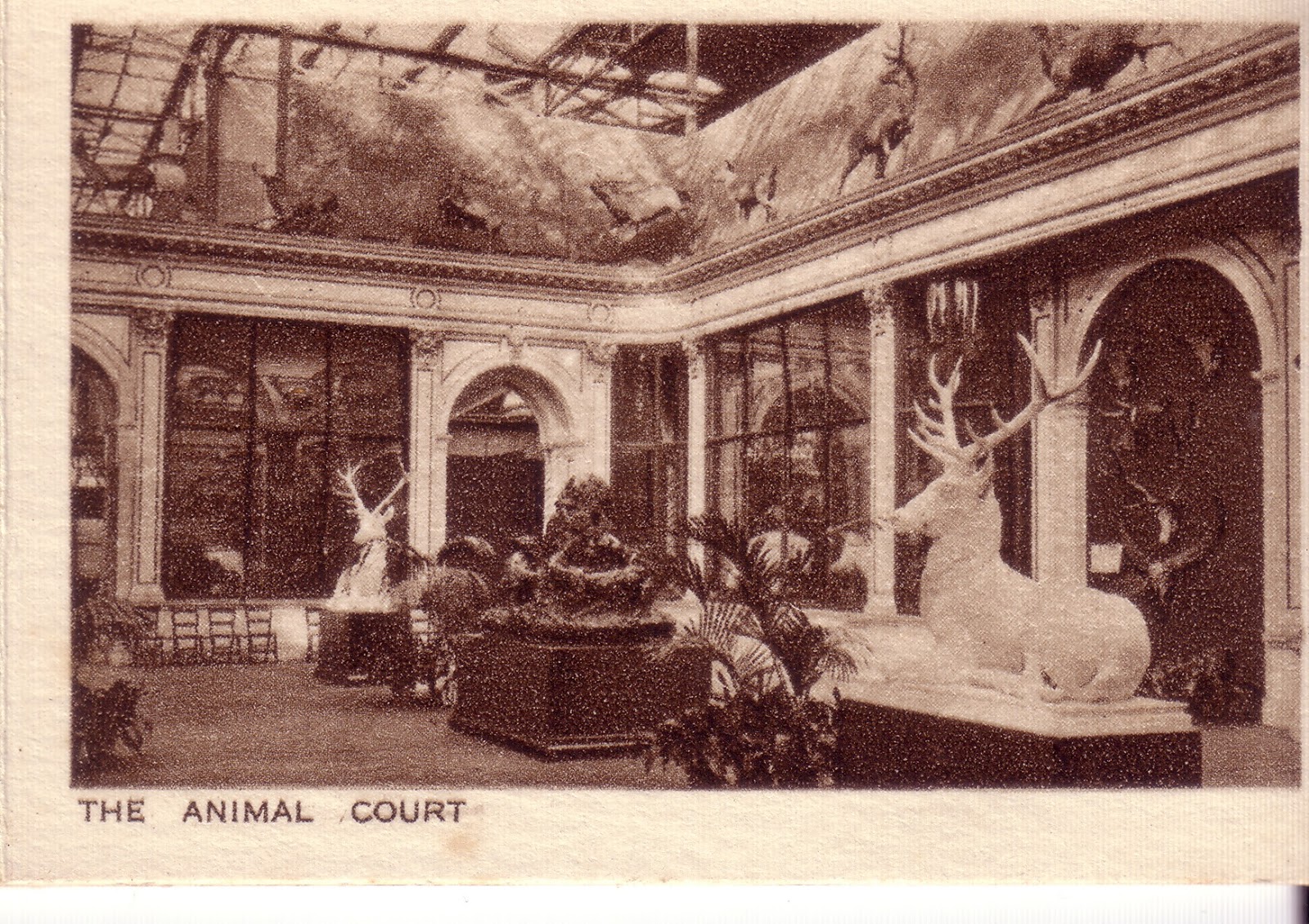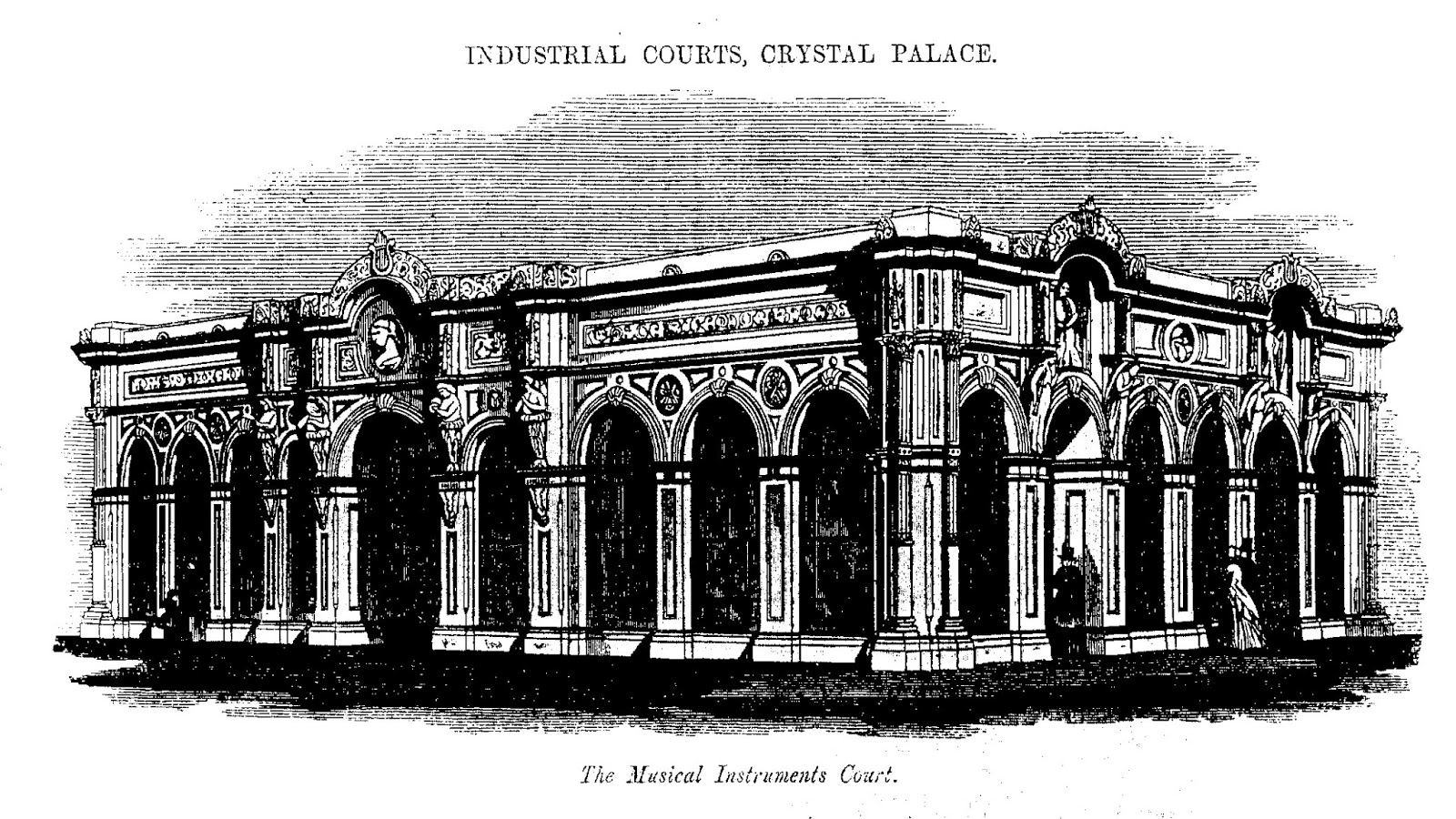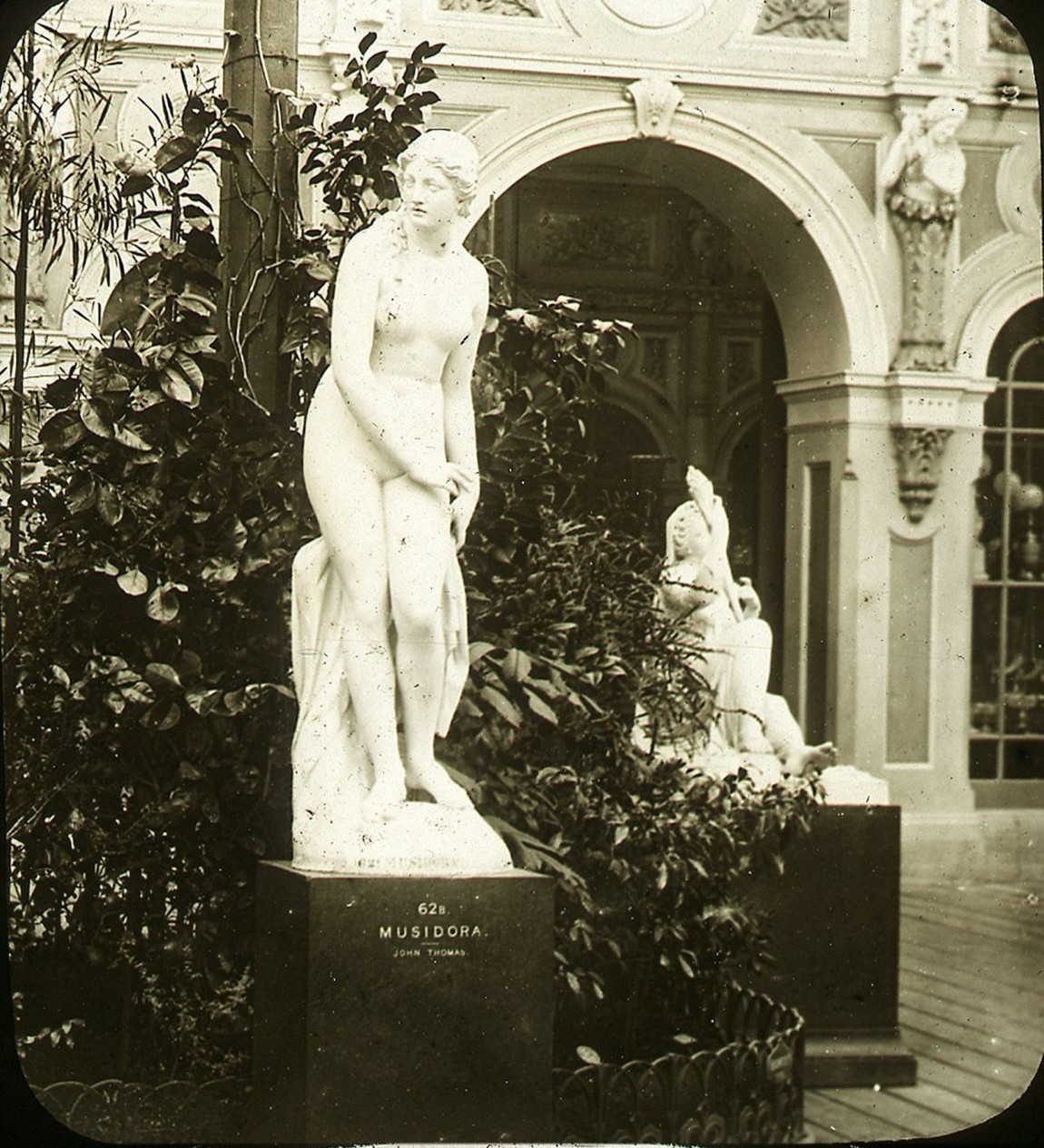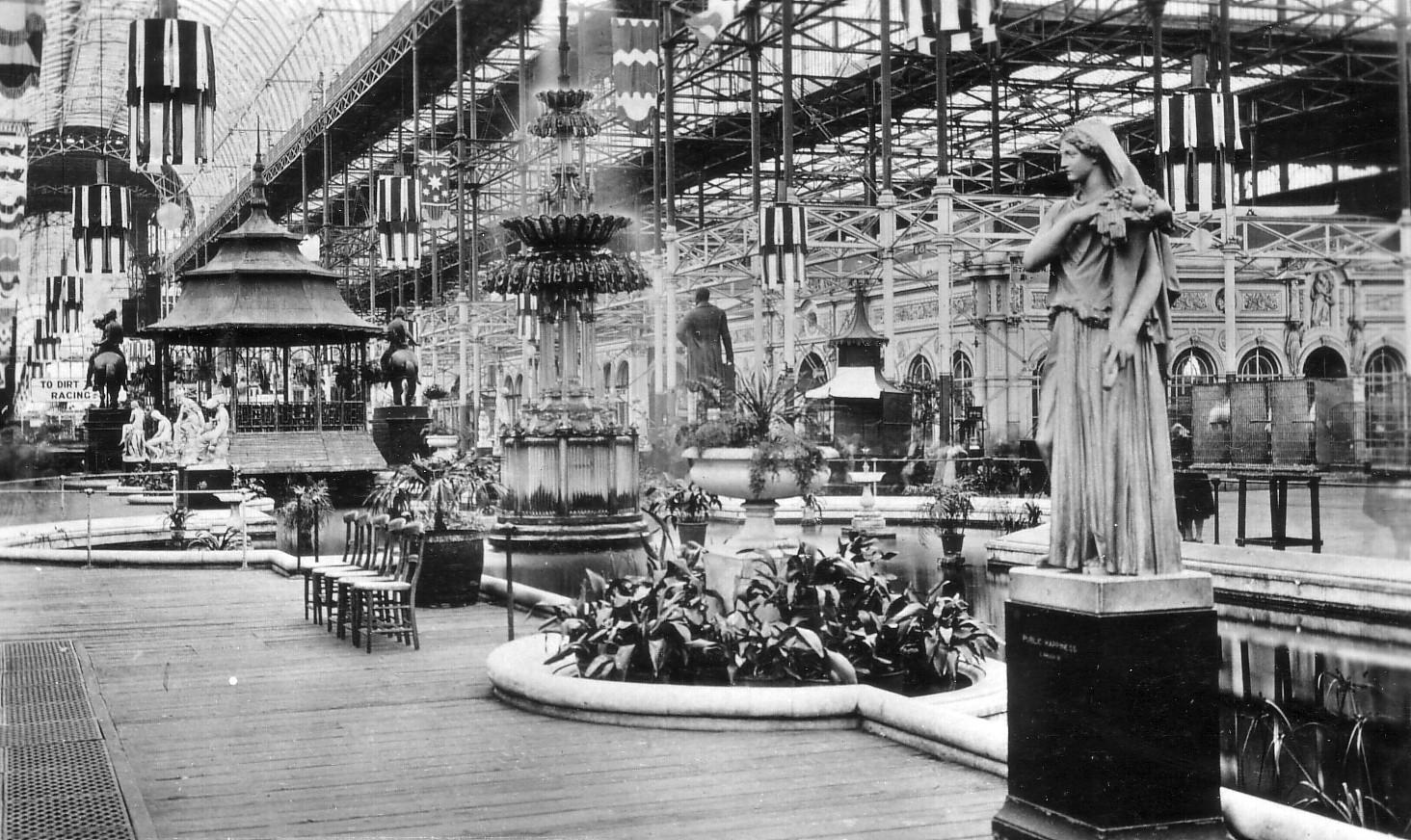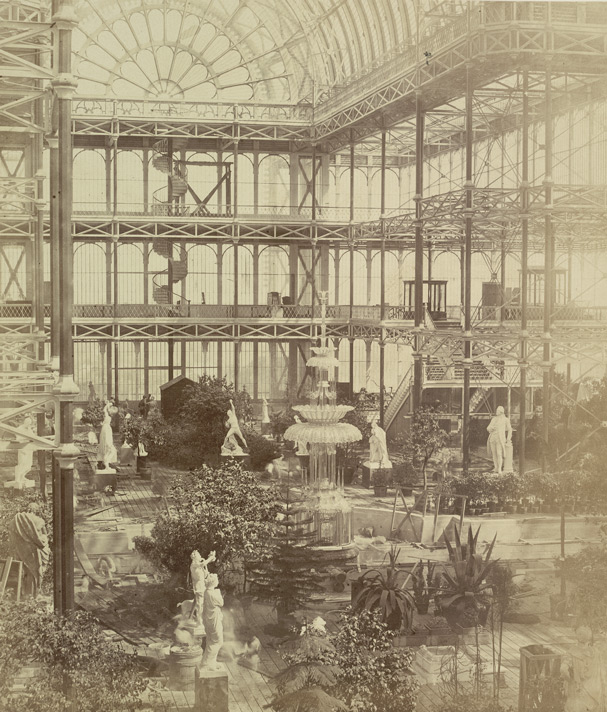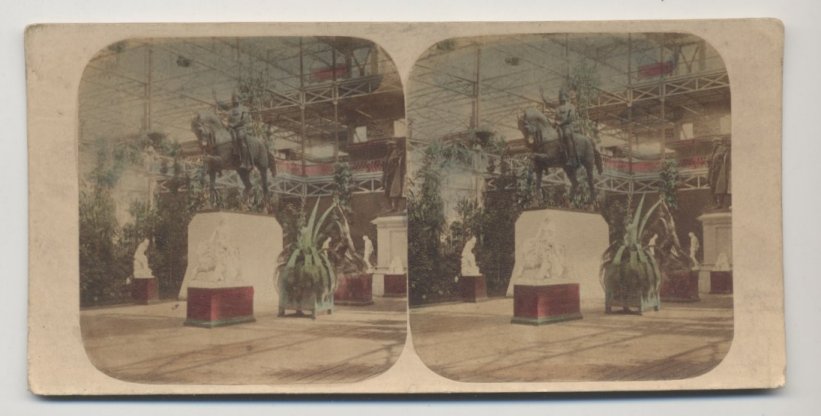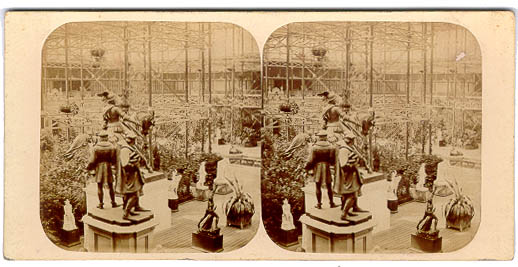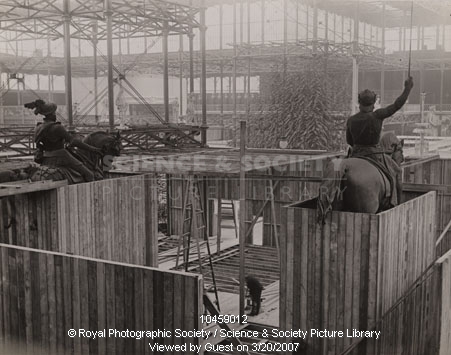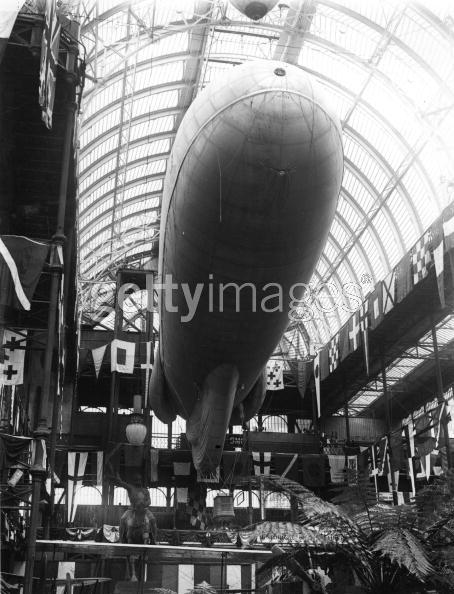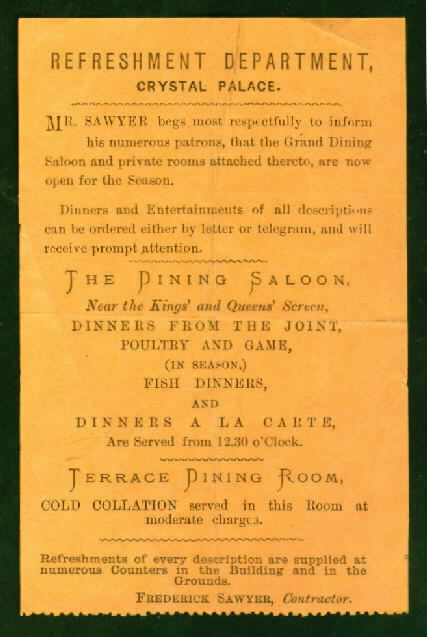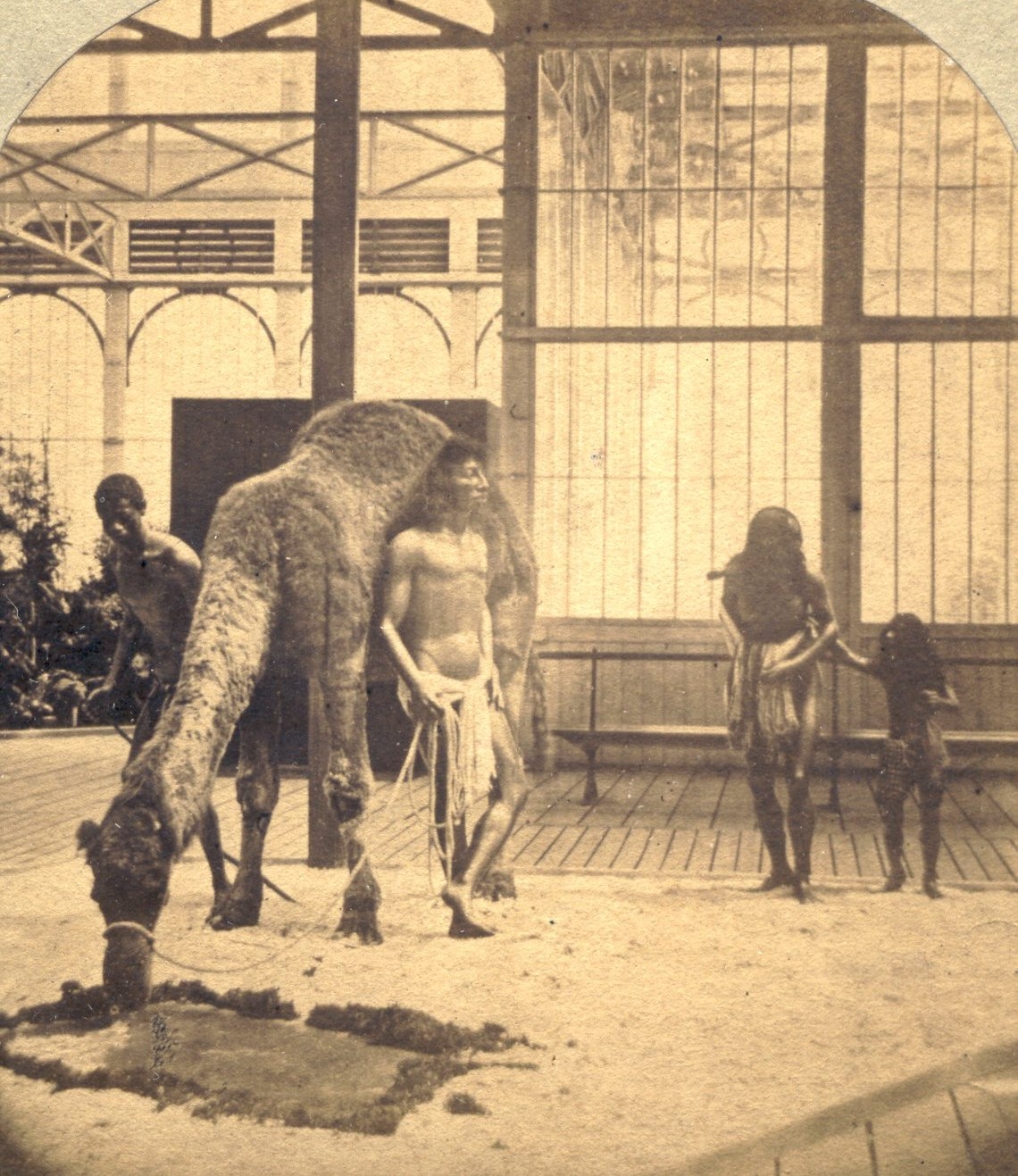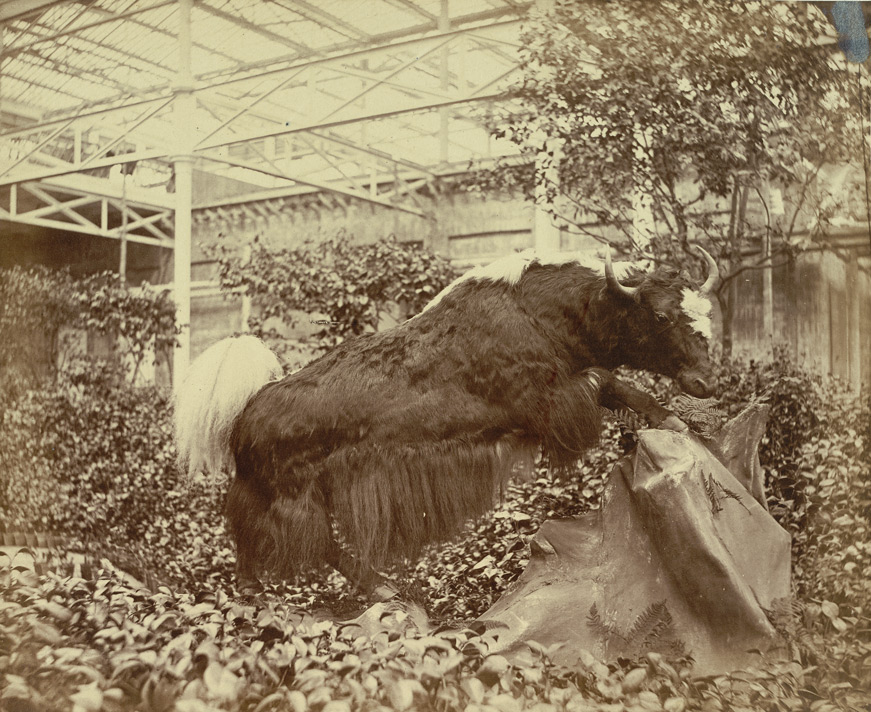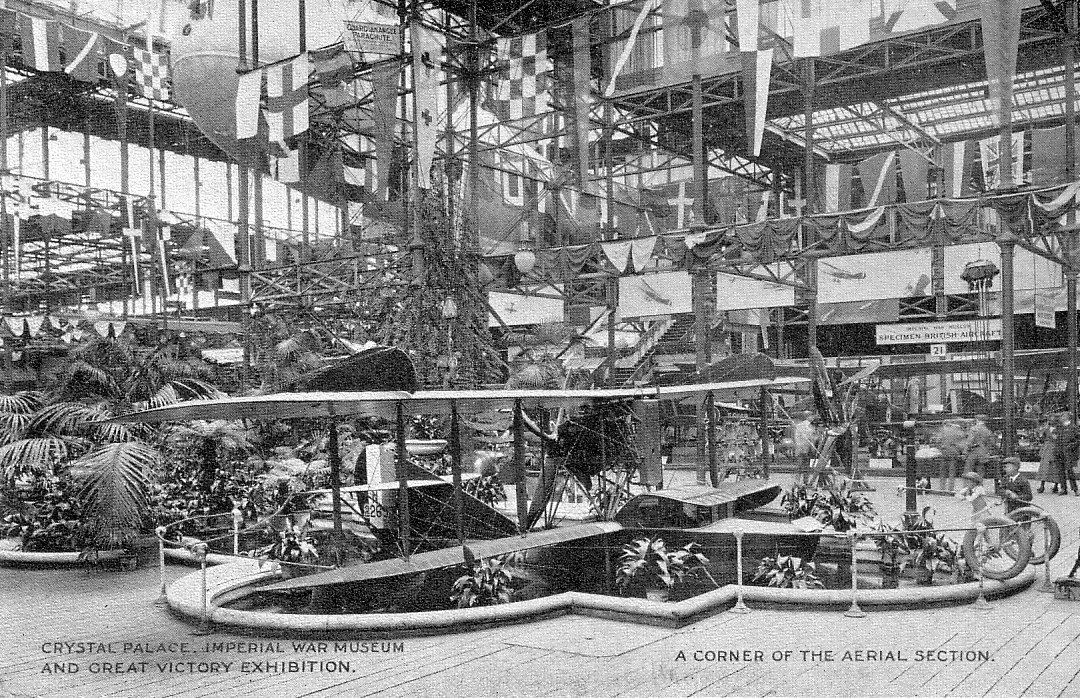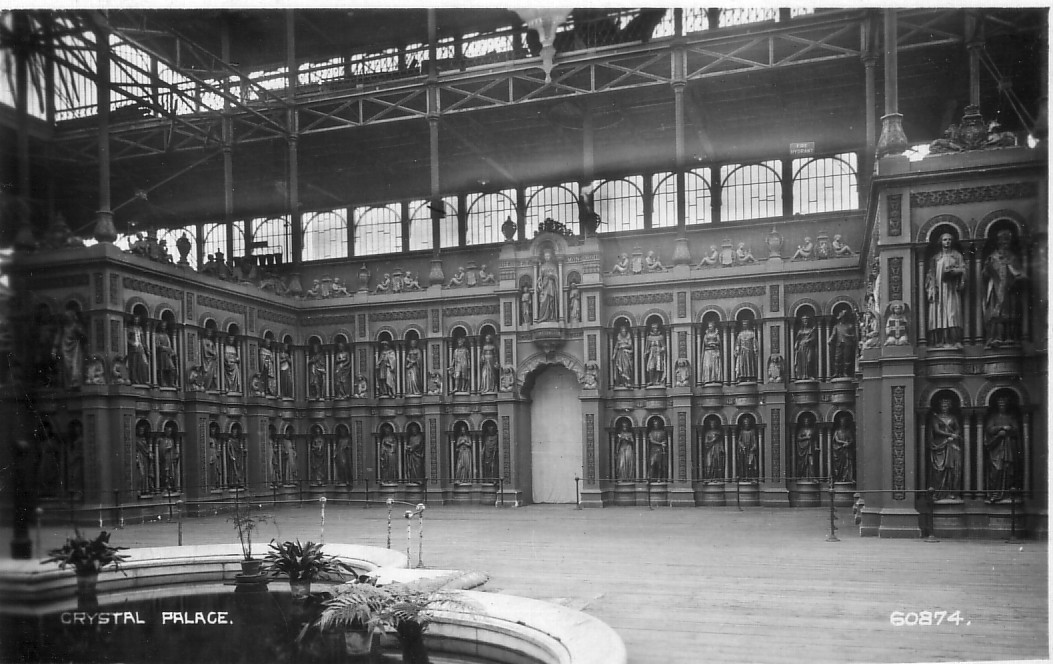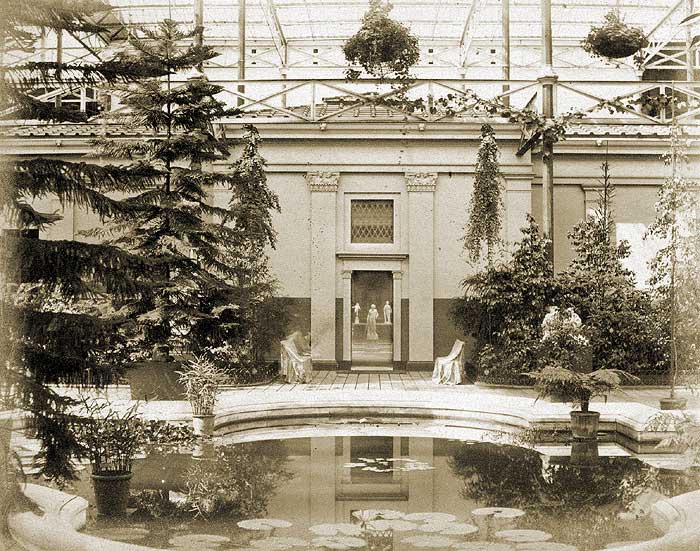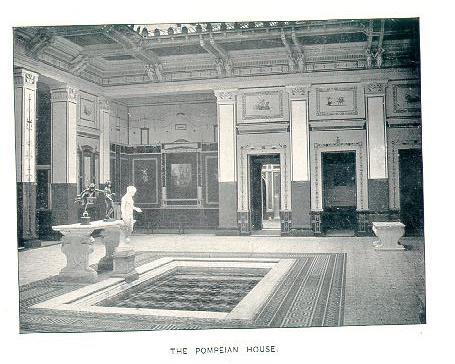Compare and contrast!The Court before which we stand is founded on a portion of the finest palatial edifice in Rome,-- the Farnese Palace, commenced by the architect Antonio Sangallo, for Cardinal Farnese, and finished under the direction of Michelangelo.
A curious fact in connexion with the original building is, that the stone which compose it were taken from the ancient Coliseum, within whose mighty walls the early Christians suffered martyrdom; so that, in truth, the same stones which bore witness to the faith and courage of the early devotees, served afterwards to build, for the faith triumphant a palace in which luxury, worldliness, and pride, found a genial home.

Italian Court, nave facade - Delamotte 1854 - British Library.

Lithograph by Day & Sons.
In front to the left a female saint from the Santa Maria Gloriosa dei Frari in Venice, and to the right Bacchus by Jacapo Sansovino.
Prior to entering the Court, we may remark, in the niches, the bronze statues by Sansovino, from the Campanile Loggia at Venice, amongst which Apollo is conceived quite in the old Roman spirit.
-General Guide. 1854

Apollo by Sansovino, just visible in the alcove to the left in the image above.
Passing beneath the columns in the centre of the court, we see the fountain of the Tartaughe, or “of the Tortoises” at Rome, designed by Gicomma dell Porta, with bronze statues by Taddee Landini.


The fountain in the centre of the Court has been executed by Mr. Cundy out of alabaster presented to the Crystal Palace Company by T. Hills, Esq., of Burton-on-Trent. This beautiful material is the produce of his quarries at Fauld, in Staffordshire.
- Handbook to the Italian Court. 1854
Turning to the right [going anti clockwise], the first object that attracts our attention is a statue of the Virgin and Child [Medici Madonna], by Michelangelo, the original of which is at San Lorenzo, Florence.

Advancing to the south side, we enter a loggia or arcade, the interior of which is richly ornamented with copies of Raffaelle‘s celebrated frescoes in the Loggia of the Vatican palace at Rome. They consist of a most fanciful, yet tasteful combination of landscape figures, architecture and foliage, founded on antique models, and bearing a close resemblance to the ornamental work discovered in various Roman ruins, especially at the towns of Pompeii and Herculaneum, which however, were at the time unknown.

Delamotte. Source: English Heritage
In the centre of the arcade, towards the Court, is the monument of Guiliano de Medici, from San Lorenzo, Florence. On each side of his statue are the reclining Night and Light (part of the same monument). This is one of Michelangelo’s masterpieces, and is remarkably characteristic of the sculptor’s style.
At the back of it, in the Loggia, is a fine specimen of bronze casting, from Venice. [The Gates from the Loggia of the Campanile. St Marks. Venice]

On each side of the entrance to the gallery are two groups of a Virgin with the dead Christ, that to the right being by Bernini [Montauti!], the other to the left by Michelangelo, both especially interesting as serving to indicate the state of art in the 16th and 17th centuries respectively.

Pieta by Antonio Montauti ca 1734 from the Corsini Chapel in the laterano Rome

On the left of this entrance is marked on the map, the "Dying Slave" by Michelangelo [Louvre], and to the right "Cristo della Minerva" or Christ the Redeemer, also by Michelangelo. Doesn't match the picture above does it, with the "Dying Slave" to the left of Montauti's Pieta, and Michelangelo's "Moses" is in the shadows of the gallery behind the Court, when he's marked on the map as in the Central Transept. Ho hum.
The visitor may now enter the loggia [on the north side], which, like its companion on the other [south] side of the Court, is ornamented with copies of Rafaelle’s frescoes from the Vatican.
In the centre of this side of the court is placed Michelangelo’s celebrated monument of Lorenzo de’ Medici, from the church of San Lorenzo at Florence; the reclining figures on each side of the statue of Lorenzo represent Dawn and Twilight.

Delamotte ca 1854, reprinted in the 1911 auction Catalogue. Source: Science and Society site
At the back of this monument within the arcade is the fine bronze door by Sansovino from St. Mark’s, Venice, on which he is said to have laboured from twenty to thirty years. The projecting heads are supposed to be portraits; amongst them are those of Titian, Aretino, and of the sculptor himself.

"The door of the Sacristy in the Basilica of San Marco was executed by Jacopo Sansovino. It has bronze panels depicting the Resurrection of Christ and the Deposition, surrounded by a frame decorated with figures of the Evangelists and Prophets and portraits (among them Titian, Veronese, Sansovino)." Web Gallery of Art
Proceeding onwards, the beautiful composition of Jonah and the whale, by Raffaelle, is from the Chigi Chapel at Rome.


Stereoview of the Italian Court, by London Stereoscopic Company [I'll replace with a scan of one of my own when I get round to it] you can see I've had to reverse it. As well as Lorenzo de Medici, you can see one of the candelabrum by Annibale Fontana in the window, and just inside to the left, Jonah and the Whale by Raphael.
Passing into the gallery on the garden side, we remark in the four angles the pedestals of the Venetian standards, from the square of St. Mark, Venice [by Alessandro Leopardi].
The painted ceilings of this gallery deserve especial attention. The first on entering the gallery is from an existing example at the “Old Library,” Venice; the last is from the “Camera della Segnatura,” by Raffaelle, at the Vatican; beneath which is the fine statue of St. Jerome, by Torrigiano, from Seville, in Spain.
THE CRYSTAL PALACE CLUB.
Another Palace Institution, whose premises command a splendid view of the grounds, and the summer attractions, is the above Club. The magnificent rooms of the Italian Court have been converted to suit the purposes of the Club, and it is safe to say that in no more palatial suite of rooms is any London Club housed. A paddock is attached to the Club where in summer, the members may enjoy themselves in the open air while still having the advantage of privacy. A welcome feature is the admission of lady members, for whose accomadation special rooms are provided.
- General Guide. 1901

Pieta by Michelangelo outside the Italian Court. Source: Artur Talbot ca. 1920's.
As can be seen, this involved glazing in the central entrance, and moving out ALL the casts from the Court, into the Nave. Access to the club was through the Elizabethan Vestibule.
THE ITALIAN VESTIBULE.

The decoration of the vestibule is founded on the very elegant Casa Taverna at Milan, Bernardino Luini, a pupil of Leonardo da Vinci, and affords an excellent idea of the peculiar painted mural ornament prevailing in Italy at the commencement of the 16th century.

Elevation of portion of the court yard of "Casa Taverna" at Milan painted by Bern. Luini.
SPECIMENS OF ORNAMENTAL ART SELECTED FROM THE BEST MODELS OF THE CLASSICAL EPOCHS Plate #75. Elevation of Portion of the Court Yard of Casa Taverna at Milan. (Painted by Berno Luini)
by GRUNER, LEWIS (LUDWIG).
Publisher Information:
Thomas M'Lean, London: 1850.
http://digitalgallery.nypl.org/nypldigi ... &snum=&e=w
The [interior?] doors are from the Palace of the Cancellaria [Palazzo della Cancelleria] at Rome, by Bramante, the famous designer of St. Peter’s in that city, and the immediate predecessor of the great architects of the 16th century.
The vestibule itself is very rich in very beautiful drawings after the old masters, by Mr. [Benjamin] West. http://en.wikipedia.org/wiki/Benjamin_West
The monuments on the external wall of the vestibule afford excellent examples of the later Renaissance style.
Amongst them may be particularly noted the monument of Lancino Curzio (nearest the gallery), from Milan, by Augustino Busti, evincing that delicate execution for which the sculptor was famous; . . .

http://www.scultura-italiana.com/Biografie/Bambaia.htm
. . . and the central altar of La Madonna della Scarpa, from the Cathedral of St. Mark, Venice -- an elaborate specimen of bronze casting, completed early in the 16th century by Pietro Lombardo and others.
The monument on the side nearest the Nave is an excellent example of the Renaissance style.


A triton from the 16th century Neptune Fountain in the gardens of the Palazzo del Principe, Genoa. Bombed in the second world war it was re erected in the 1950's.

Italian Vestibule, looking west across the nave to the Egyptian Vestibule.

Court of Christian Monuments, looking towards the south facade of the Italian Vestibule.
In the foreground cast #6. "Tomb of Abbess, Chichester Cathedral." To the left, the Hildesheim Column, beyond are two nymphs by Richard James Wyatt
On the wall is the Tomb of Lancino Curzio.
In the doorways are two works by Antonio Canova. To the left "Venus and Adonis" and to the right "The Three Graces"
We have now completed our survey of one of the most interesting features of the Crystal Palace. We have performed our promise to guide the visitor through the various Fine Art Courts, bringing before his notice some of the principal objects that have adorned his road, and endeavouring, by our brief remarks, to heighten the pleasure he must necessarily have experienced from the sight of so noble an assemblage of architectural and sculptural art.
Much however remains to be seen and accomplished - much that requires patient examination and study - examination that will yield fresh beauty, and study that will be rewarded by permanent and useful knowledge.
For guidance and help we refer the visitor to the handbooks of the several Courts.



